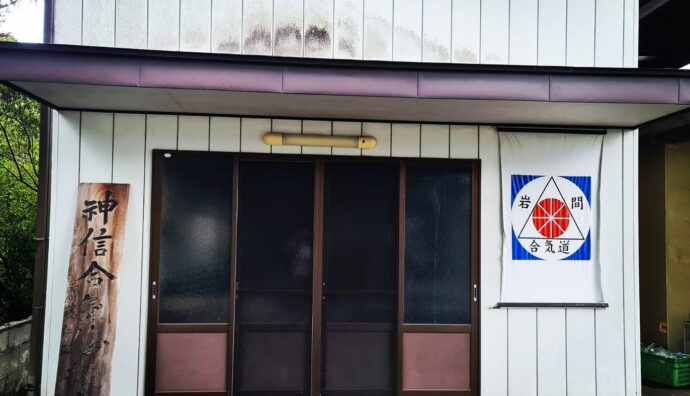Last January 14th, with the Kagami Biraki ceremony, the opening of the year of practice was celebrated in dojos around the world.
In Japan, at the Honbu Dojo, Morihei Ueshiba’s grandson and great-grandson performed their commemoration by offering a demonstration (enbukai).
The same did Hitohira Saito, son of Morihiro, successor of Morihei Ueshiba at the Iwama Dojo, custodian of the local Aiki Jinja and the student who lived the longest time with the founder of Aikido.
The speech given by Hitohira Saito is available at this link. Even with the limitations of our Japanese, some passages deserve some reflection.
In the commemoration, ample space was given to the memory of Alessandro Tittarelli Shihan, who died in 2018, and to the bond of friendship that united the two. It is always noticeable, in a ceremony celebrated on the other side of the world, to hear -and in very kind terms- about Italian Aikido.
Hitohira Saito recalled that in 2024 there will be a celebration of the first twenty years of the association he founded to continue the didactic line developed in Iwama, the Iwama Shin Shin Aiki Shurenkai, of which Alessandro Tittarelli was the Italian representative.
It’s no surprise that much of the discussion revolved around the clichés that hastily define the Honbu Dojo-Iwama dualism.
Hitohira Saito sums it up very well: in Tokyo there is a “nagare no keiko”,a flowing practice. In Iwama a “kihon no keiko“. A more static one.
In Tokyo the study of weapons is not as in-depth as in Iwama and so, in Europe and around the world, as someone shows a program of aikiken and aikijo during the practice, then that is labeled as belonging to the “Iwama-style”…
If the speech had ended like this, it would have been a kind of re-proposal of what Aikido practitioners from all over the world repeat -more or less rightly, more or less like parrots, more or less out of prejudice- since they enter the locker room to when they sit down with a beer after training.
Yet.
Yet, Hitohira Saito not only clearly expresses his disappointment with the fact that defining Iwama-style on the one hand and Tokyo-style on the other gives the idea that there are two different things, not unified by Aikido. This, Saito recalls, was certainly not in the perspective of the kaiso, of the founder.
Above all, he draws a very interesting parallel between Aikido and Shodo. Exactly as in Aikido, in Shodo, Saito recalls, there is kihon, the basic practice. Then, little by little it evolves.
And then he says:
精神性が入る書になっていくわけですね. Seishin-sei ga hairu sho ni natte iku wakedesu ne.
“At a certain point [writing] embodies spirituality”. Boom!
We were not lucky enough to be able to practice with Morihiro Saito. Those who knew him closely have always reminded us of his didactic care in transmitting in the most faithful way what he had seen from the founder. They spoke to us about a man who certainly had his own spiritual and religious dimension but which did not emerge in any way during practice. After all, he had the task of transmitting what he had seen, not what he had perceived.
After all, those who have trained on the tatami populated by groups dedicated to Iwama Ryu can say that they maybe had many experiences, many of which were enriching in many ways. However, we believe we are not heretic if we say that the practice of Iwama Ryu is not that place where some “embodiement of spirituality” reverberates.
Hitohira Saito’s speech opens up a perspective that is at least new compared to clichés.
Obviously, from his perspective, Hitohira Saito can only stress the importance of the educational system born in Iwama, its completeness and above all, as he did in the speech, the importance of the kihon.
But if we take its similarity with Shodo in a new perspective and connect it with the stressing of the disappointment of seeing different “styles”, then this discussion has a new flavor.
No longer separate realities but different levels of expression, which tend towards the culmination of practice understood as that moment in which “I put my heart into it”. In which I embody in what I do the essence of the spirituality of which I am the bearer.
Last summer we saw first-hand, even in Iwama, the difference between these two realities. Numerically and organizationally, Aikikai totally overwhelmes the technical legacy of Morihiro Saito.
And all this happens in Japan, where, as we had seen, the footprint of Aikido on a cultural and social level is minimal, evanescent.
A Japan that is still very attached to the concept of continuing family traditions. Against all the evidence, sometimes. If you think about it, obstinacy is not just a Japanese characteristic.
Yet, who knows. Who knows whether bringing the practice of a discipline back to the level it deserves, that is, the level of the heart, may over time heal a wound that does no good to anyone and which has very little to do with any translation we can give to the term aiki.

